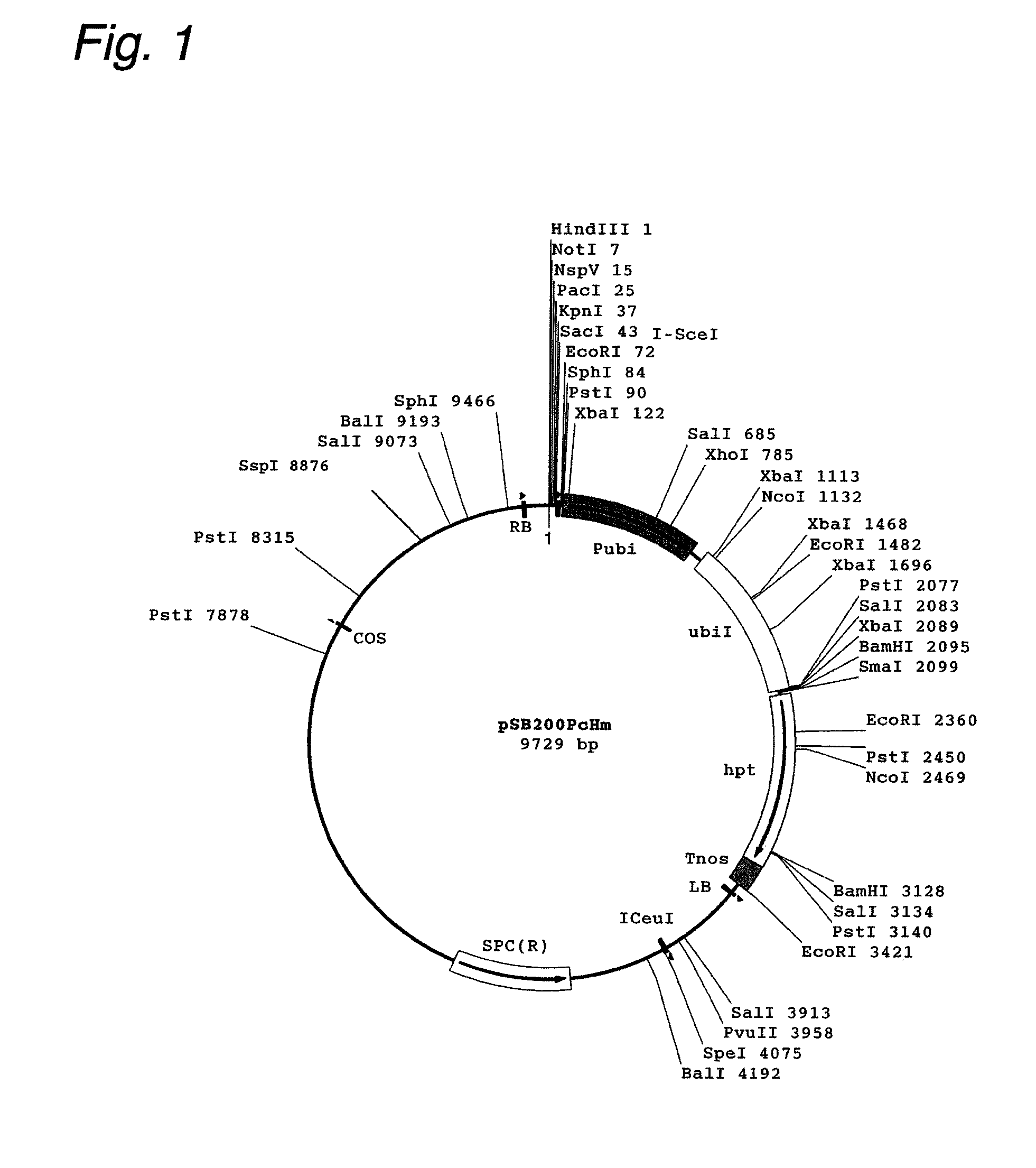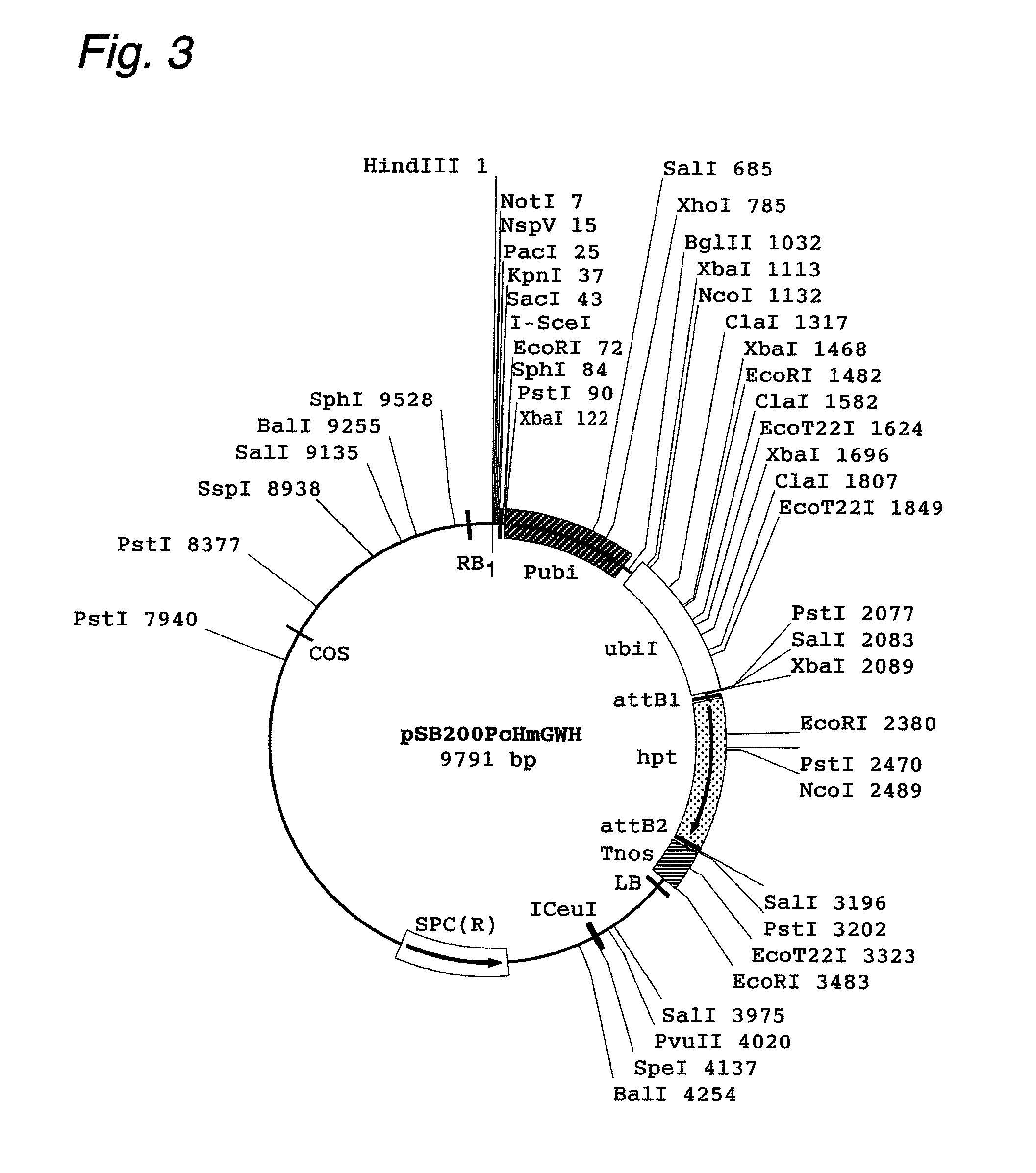Cosmid vector for plant transformation and use thereof
a plant and cosmid technology, applied in the field of new cosmid vectors for plant transformation, can solve the problems of difficult cloning operations, inconvenient cloning of dna fragments, and large dna cloning that requires skilled techniques and a considerable amount of time and labor, and achieves efficient introduction and stable m
- Summary
- Abstract
- Description
- Claims
- Application Information
AI Technical Summary
Benefits of technology
Problems solved by technology
Method used
Image
Examples
embodiment 1
[0275]A cosmid vector having a full length of 15 kb or less characterized in that:
[0276]1) it contains an origin of replication (oriV) of an IncP plasmid, but does not contain any origin of replication of other plasmid groups;
[0277]2) it contains the trfA1 gene of an IncP plasmid;
[0278]3) it contains an origin of conjugative transfer (oriT) of an IncP plasmid;
[0279]4) it contains the incC1 gene of an IncP plasmid;
[0280]5) it contains a cos site of lambda phage and the cos site is located outside the T-DNA;
[0281]6) it contains a drug resistance gene expressed in E. coli and a bacterium of the genus Agrobacterium;
[0282]7) it contains a T-DNA right border sequence of a bacterium of the genus Agrobacterium;
[0283]8) it contains a T-DNA left border sequence of a bacterium of the genus Agrobacterium;
[0284]9) it contains a selectable marker gene for plant transformation located between 7) and 8) and expressed in a plant; and
[0285]10) it contains restriction endonuclease recognition site(...
embodiment 2
[0286]The cosmid vector of Embodiment 1 wherein the selectable marker gene for plant transformation is selected from the group consisting of a hygromycin resistance gene, a phosphinotricin resistance gene and a kanamycin resistance gene.
embodiment 3
[0287]The cosmid vector of Embodiment 1 or 2, which contains the korB gene of an IncP plasmid.
PUM
 Login to View More
Login to View More Abstract
Description
Claims
Application Information
 Login to View More
Login to View More - R&D
- Intellectual Property
- Life Sciences
- Materials
- Tech Scout
- Unparalleled Data Quality
- Higher Quality Content
- 60% Fewer Hallucinations
Browse by: Latest US Patents, China's latest patents, Technical Efficacy Thesaurus, Application Domain, Technology Topic, Popular Technical Reports.
© 2025 PatSnap. All rights reserved.Legal|Privacy policy|Modern Slavery Act Transparency Statement|Sitemap|About US| Contact US: help@patsnap.com



